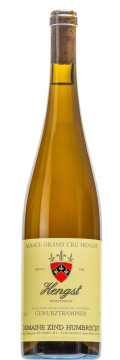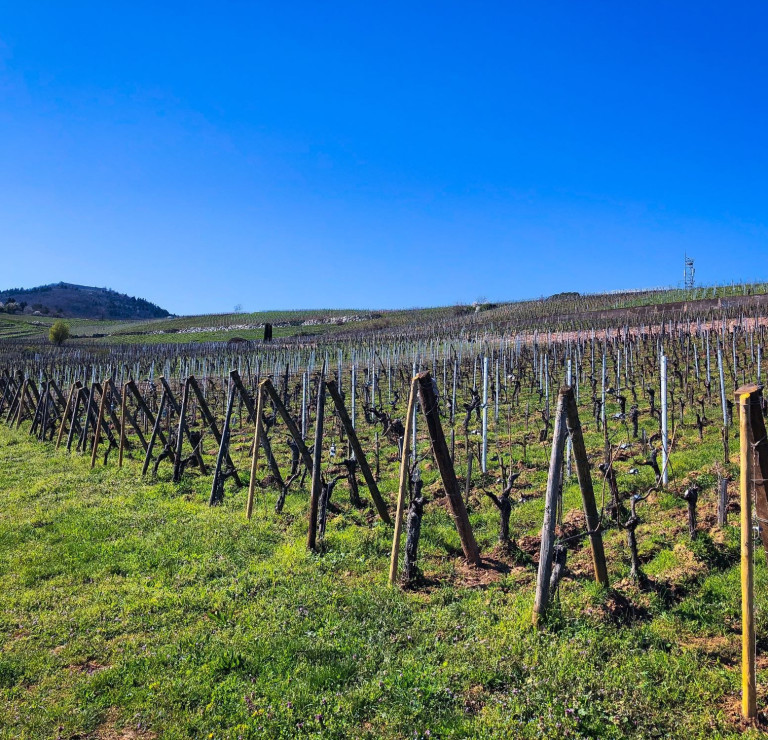
Technical presentation
| Bottling : | August 2017 |
|---|---|
| Acquired alcohol : | 14° |
| Residual sugar : | 2.7 g/l |
| Total acidity : | 2.2 g/l H2SO4 / (3.4g/l Tartrique) |
| pH : | 3.90 |
| Yield : | 43 hl/ha |
| Optimum tasting : | 2021-2041+ |
| Average age of vines : | 65 years |
| Terroir : | Grand Cru Hengst |
| Sweetness index : | 3 |
| Available for sale : | Yes |
| Soil : | Calcareous Marl from the Oligocene period, South/South East facing, medium/steep slope |
Description of the wine Gewurztraminer Grand Cru Hengst 2016
This wine comes from two very old vineyards located in the middle of the Grand Cru, both planted with old massal selection that produce beautiful Gewurztraminer, more dark orange than purple, the ugly colour of the modern clones…. Hengst is in a warm and dry precocious micro-climate, facing south-east and an average to steep slope. The red marl limestone soil brings great structure to the wines, interesting tannins that are always perfectly ripe. The Hengst is ripe early, but because it has the capacity to keep the grapes healthy for a long time, it can be harvested quite late. Understanding Gewurztraminer is tricky, and I would say that this grape is in fact a red wine, which is sweet and looking like a white wine! Just like for a red wine, it is the phenolic and skin ripeness that matters the most for such wines. In 2015, the Hengst delivered an absolute classic wine.

Tasting notes
08/2017 : Bright gold colour. The nose shows big flavours, not shy at all and it announces a nice ripeness and concentration on the palate. There is a mix of ripe exotic fruits and delicate flowers on the palate, but also big unmistakable limestone characteristic in terms of spices and minerals. This is a rich wine that shows a firm structure where tannins and sweetness play together. Very long finish, velvety, not too sweet at all, built to age !

The Hengst Grand Cru of Wintzenheim
The Hengst was first mentioned in the 9th century in an endowment of the Murbach Abbey. The lord of Haut Landsbourg as well as the bailiff of Kaysersberg shared the feudal rights up to the Great Revolution, whilst various noble families, abbeys and the bourgeoisie of Colmar exploited important parcels.